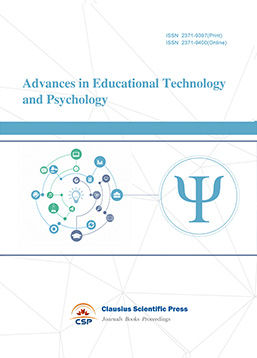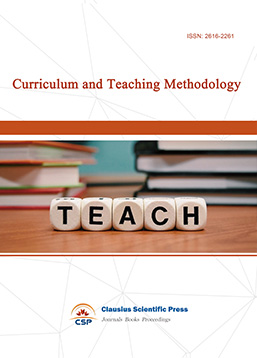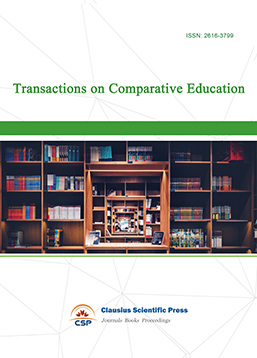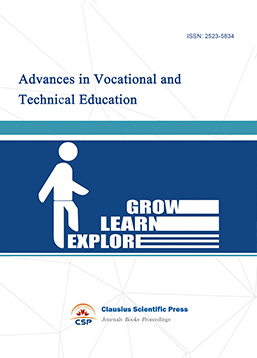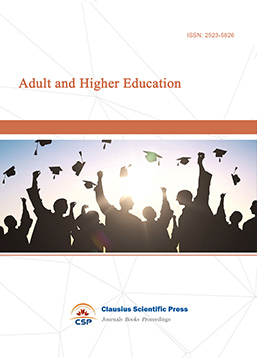Self-Agency in the Face of Inferiority: Examining the Boundaries
DOI: 10.23977/appep.2025.060316 | Downloads: 2 | Views: 57
Author(s)
Xuru Zhou 1
Affiliation(s)
1 Loomis Chaffee, Windsor, Connecticut, 06095, USA
Corresponding Author
Xuru ZhouABSTRACT
The act of "feel[ing]" in Roosevelt’s statement encompasses both emotions and judgments, revealing the first flaw in her assertion: its conceptual imprecision regarding "feel[ing]" in the context of inferiority. By definition, inferiority refers to "a condition or state of being or having a sense of being inferior or inadequate especially with respect to one's apparent equals or to the world at large" (Merriam-Webster, n.d.). Crucially, emotions and judgments represent distinct psychological processes—the former being automatic and the latter requiring higher-order cognition—each eliciting divergent mental mechanisms that either wholly undermine or partially support her claim. This terminological vagueness renders the statement misleading.
KEYWORDS
Inferiority, Self-Agency, ResilienceCITE THIS PAPER
Xuru Zhou, Self-Agency in the Face of Inferiority: Examining the Boundaries. Applied & Educational Psychology (2025) Vol. 6: 114-119. DOI: http://dx.doi.org/10.23977/appep.2025.060316.
REFERENCES
[1] Adler, A. (2023). What life could mean to you. Must Have Books.
[2] American Psychological Association. (n.d.). Cognitive dissonance. In APA dictionary of psychology. Retrieved July 19, 2025, from https://dictionary.apa.org/cognitive-dissonance
[3] Webster, N., Neilson, W. A., Knott, T. A., & Carhart, P. W. (n.d.) (1934). Webster's new international dictionary ofthe English language. Merriam-Webster.
[4] LeDoux, J. E. (1996). The emotional brain: The mysterious underpinnings of emotional life. Simon & Schuster.
[5] De Martino, B., Kumaran, D., Seymour, B., & Dolan, R. J. (2006). Frames, biases, and rational decision-making in the human brain. Science, 313(5787), 684–687. https://doi.org/10.1126/science.1128356
[6] Festinger, L. (1954). A theory of social comparison processes. Human Relations, 7, 117–140.
[7] Polderman, T., Benyamin, B., de Leeuw, C., Sullivan, P. F., van Bochoven, A., Visscher, P. M., & Posthuma, D. (2015). Meta-analysis of the heritability of human traits based on fifty years of twin studies. Nature Genetics, 47(7), 702–709. https://doi.org/10.1038/ng.3285
[8] Sapolsky, R. (2018). Behave: The biology of humans at our best and worst. Penguin Books.
[9] Kahneman, D. (2012). Thinking,fast and slow. Penguin.
[10] Gross, J. J. (2002). Emotion regulation: Affective, cognitive, and social consequences. Psychophysiology, 39(3), 281–291. https://doi.org/10.1017/S0048577201393198
[11] Tversky, A., & Kahneman, D. (1973). Availability: A heuristic for judging frequency and probability. Cognitive Psychology, 5(2), 207–232.
[12] Gilbert, D. T. (2009). Stumbling on happiness. HarperCollins Publishers.
[13] Maier, S. F., Amat, J., Baratta, M. V., Paul, E., & Watkins, L. R. (2006). Behavioral control, the medial prefrontal cortex, and resilience. Dialogues in Clinical Neuroscience, 8(4), 397–406. https: //doi. org/10. 31887/DCNS. 2006. 8. 4/smaier
[14] Amat, J., Paul, E., Zarza, C., Watkins, L. R., & Maier, S. F. (2006). Previous experience with behavioral control over stress blocks the behavioral and dorsal raphe nucleus activating effects of later uncontrollable stress: role of the ventral medial prefrontal cortex. Journal of Neuroscience, 26(51), 13264-13272.
[15] Blackwell, L. S., Trzesniewski, K. H., & Dweck, C. S. (2007). Implicit theories of intelligence predict achievement across an adolescent transition: A longitudinal study and an intervention. Child Development, 78(1), 246–263. https: //doi.org/10.1111/j.1467-8624.2007.00995.x
[16] Baumrind, D. (1971). Current patterns of parental authority. Developmental Psychology, 4(1, Pt. 2), 1–103. https: //doi.org/10.1037/h0030372
[17] Baumrind, D. (1991). The influence of parenting style on adolescent competence and substance use. The Journal of Early Adolescence, 11(1), 56–95. https://doi.org/10.1177/0272431691111004
[18] Steinberg, L. (2001). We know some things: Parent–adolescent relationships in retrospect and prospect. Journal of Research on Adolescence, 11(1), 1–19. https://doi.org/10.1111/1532-7795.00001
[19] Pinquart, M., & Kauser, R. (2018). Do the associations of parenting styles with behavior problems and academic achievement vary by culture? Results from a meta-analysis. Cultural Diversity & Ethnic Minority Psychology, 24(1), 75–100. https://doi.org/10.1037/cdp0000149
[20] McLoyd, V. C. (1998). Socioeconomic disadvantage and child development. American Psychologist, 53(2), 185–204. https://doi.org/10.1037/0003-066X.53.2.185
[21] Bowlby, J. (1969). Attachment and loss: Vol. 1. Attachment. Basic Books. American Psychiatric Association
[22] American Psychiatric Association, DSM-5. (2013). Diagnostic and statistical manual of mental disorders (5th ed.). https://doi.org/10.1176/appi.books.9780890425596.
| Downloads: | 16513 |
|---|---|
| Visits: | 586503 |

 Download as PDF
Download as PDF